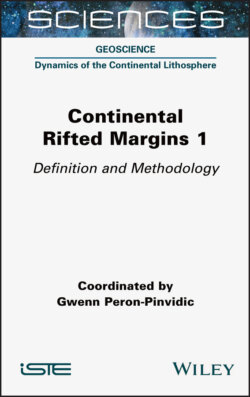Читать книгу Continental Rifted Margins 1 - Gwenn Peron-Pinvidic - Страница 25
1.2.2.2. Rifts at convergent plate boundaries
ОглавлениеSedimentary basins can also develop in close spatial and temporal relation to an active orogen in a convergent tectonic setting. These include basins in trenches, fore-arcs and foreland, intra-arcs, back-arcs/hinterland, retro-arcs/-foreland, pro-foreland and wedge-top regions. The list of basins in convergent settings is very long, often confusing and sometimes misleading. The various descriptors can identify the different structural settings in which the basins form (e.g. if the basin develops over the subducting plate, on the edge of the orogen, far from the orogen, within the orogen, etc.), and/or the different types of substratum (e.g. continental or oceanic crust). However, given the regular structural complexity of orogenic settings, the description of the basin into one category or the other is often not straightforward.
In general, basins in convergent plate boundaries can be produced in areas under local extension or in areas under compression where accommodation space is generated. For instance, extension can occur in a convergent tectonic boundary in the back-arc region (Figure 1.12). Typical examples of basins related to orogenesis include the Upper Rhine Graben, the North Alpine foreland basin, the Ganges basin and the Andean basins.
In a post-orogenic context, the overthickened lithosphere tends to a re-equilibration of its gravitational and thermal status by lithosphere thinning and, hence, extension (e.g. Dewey 1988; Rey et al. 2001). This is the so-called orogenic collapse, a specific tectonic mechanism that can lead to the formation of extensional basins inside the orogen (see Chapter 2).
Figure 1.11. a) Topographic map of central Africa showing the outline of the main cuvette of the Congo Basin (blue line). The inset globe shows worldwide location; b) sediment thickness map of the Congo Basin. The red line shows the location of the c) seismic profile, and the thick black line shows the d) section; c) seismic profile, without (left) and with (right) vertical exaggeration. BCBS: base of the cratonic basin sequence and d) geological cross-section showing the stratigraphic architecture of the Congo Basin (source: Watts et al. 2018)
Back-arc basins can be further highlighted, as these can evolve into actual rifts and rifted margins. Back-arc basins form above subduction zones in response to tensional forces generated by the down-going slab and related dynamics, and/or the collapse of the adjacent edge of the continent (Figure 1.12) (Stern 2002). Back-arc basins have peculiar geometries; they are usually very long (several hundreds to thousands of kilometers) and relatively narrow (a few hundred kilometers) and are often associated with magmatism and significant hydrothermal activity. Basalts in these basins have geochemical signatures similar to mid-ocean ridge basalts (MORBs), although they are significantly richer in magmatic water. In extreme cases, the back-arc rifting can be very pronounced, with a significant rise of the asthenosphere leading to a lithospheric breakup and the genesis of new oceanic crust. Typical examples of active back-arc basins include the Tyrrhenian Sea, the Mariana Trough, the Black Sea, Tonga-Kermadec, the south Fiji basin, with most being found along the western margin of the Pacific Ocean.
Figure 1.12. Illustration of the back arc, forearc and trench basins related to a subduction zone. The figure is a schematic section through the upper 140 km of a subduction zone, showing the principal structural components (source: modified from Stern 2002)
